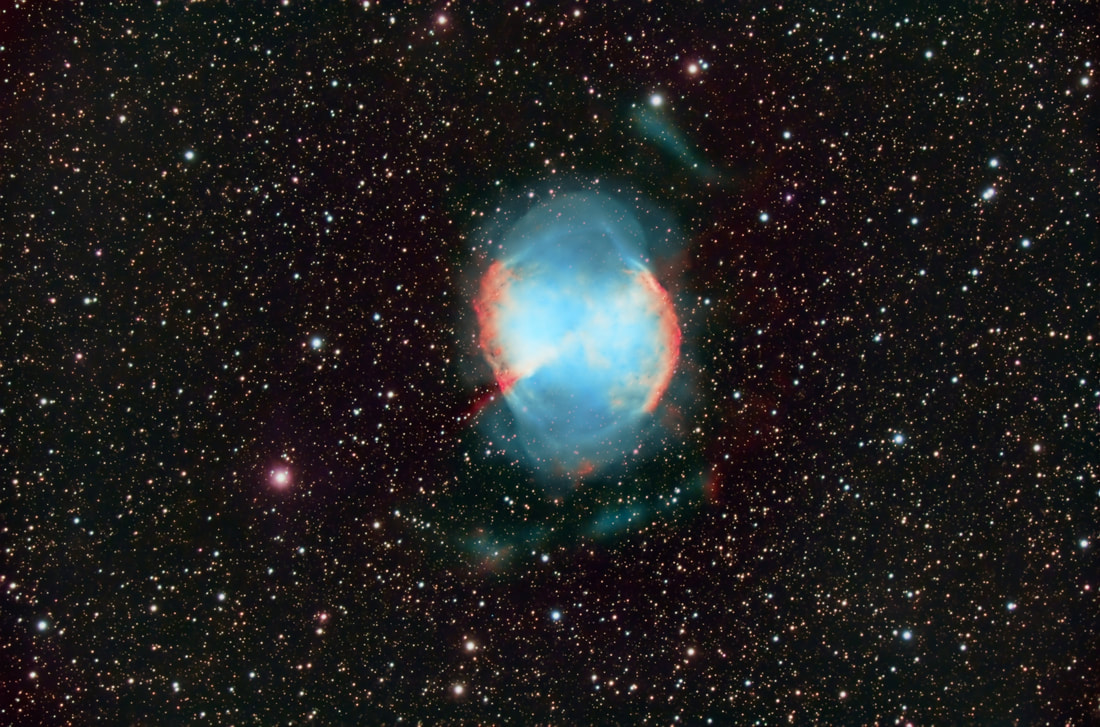|
A nebula is a cloud of dust and gas in space. Some nebulae are giant clouds where new stars are being formed. A famous example is the Pillars of Creation inside the Eagle nebula, Messier 16.
A planetary nebula is a type of nebula consisting of an expanding, glowing shell of ionized gas ejected from red giant stars late in their lives. The term "planetary nebula" is a misnomer because they are unrelated to planets. The term originates from the planet-like round shape of these nebulae observed by astronomers through early telescopes. The first usage may have occurred during the 1780s with the English astronomer William Herschel who described these nebulae as resembling planets; however, as early as January 1779, the French astronomer Antoine Darquier de Pellepoix described in his observations of the Ring Nebula, "very dim but perfectly outlined; it is as large as Jupiter and resembles a fading planet". Though the modern interpretation is different, the old term is still used. Spotted by Charles Messier in 1764, the Dumbbell Nebula or M27 was the first planetary nebula ever discovered. The nebula is the result of an old star that has shed its outer layers in a glowing display of color.
0 Comments
Approximately 21 million years ago a star exploded. In May of 2023, the light from that exploding star reached earth. The star is located in a galaxy called M101 or the Pinwheel galaxy. The Pinwheel Galaxy (also known as Messier 101, M101 or NGC 5457) is a face-on spiral galaxy 21 million light-years away from Earth in the constellation Ursa Major. It was discovered by Pierre Méchain in 1781 and was communicated that year to Charles Messier, who verified its position for inclusion in the Messier Catalogue as one of its final entries.
The images show a picture of the galaxy taken from Anacortes WA on the 24th of May, 2023 with a circle around the area of the exploding star, known as a Super Nova, with a zoomed in portion also circled to the right and above. To the right and below is a zoomed in view of that same area of M101 taken from Anacortes WA on the 19th of April, 2020 (sorry that one is a little grainy,…I am getting a little better at this as the years go on). |
AuthorTony Edwards - ICAS V.P. ArchivesCategories |


 RSS Feed
RSS Feed
